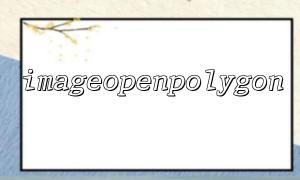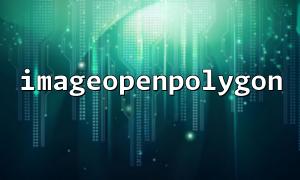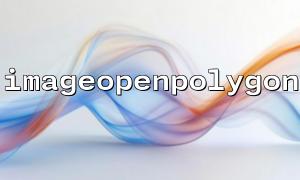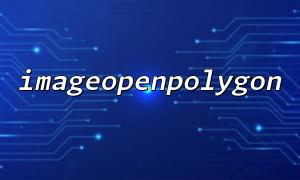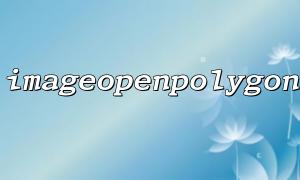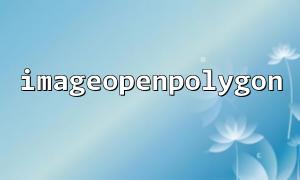In many image processing applications, users may need to label areas on the image, which can usually be achieved by drawing polygons. As a widely used server-side scripting language, PHP provides many image processing functions, and the imageopenpolygon function is one of the powerful functions. This function allows developers to draw polygon annotation areas on a specified background image. This article will introduce in detail how to use the imageopenpolygon function and implement a complete polygon drawing function.
Before using the imageopenpolygon function, you need to make sure that the GD library (image processing extension) is enabled in your PHP environment. In most cases, the GD library is enabled by default, but if your PHP environment does not enable the library, you can enable it through the following steps:
Find and uncomment in the php.ini configuration file (delete the previous semicolon) extension=gd .
Restart the PHP service.
First, we need to load a background image, which can be any supported image format (such as JPG, PNG, or GIF). Use functions such as imagecreatefromjpeg() , imagecreatefrommpng() , or imagecreatefromgif() to load images in different formats.
<?php
// Loading background image
$image = imagecreatefromjpeg('background.jpg'); // Replace the background image path with the actual path
if (!$image) {
die('无法Loading background image像');
}
?>
Next, you need to define the vertex coordinates of the polygon. The imageopenpolygon function requires an array containing vertex coordinates. Each vertex is represented by two numbers (x and y), and these coordinates are relative to the background image.
<?php
// Define polygon vertices
$polygonPoints = array(
50, 50, // vertex1 (x1, y1)
150, 50, // vertex2 (x2, y2)
150, 150, // vertex3 (x3, y3)
50, 150 // vertex4 (x4, y4)
);
?>
Now we can use the imageopenpolygon function to draw polygons on the image. This function not only draws borders, but also fills polygons by setting colors.
<?php
// Create a color resource
$color = imagecolorallocate($image, 255, 0, 0); // red
// useimageopenpolygonFunction drawing polygons
imageopenpolygon($image, $polygonPoints, count($polygonPoints) / 2, $color); // 绘制red多边形
?>
After the drawing is complete, you can choose to save the modified image to a file, or output it directly to the browser. Here is how to output the modified image to the browser.
<?php
// Output image to browser
header('Content-Type: image/jpeg');
imagejpeg($image); // The output isJPEGFormat
// Clean the memory
imagedestroy($image);
?>
Combining all the code, we get the following complete sample code:
<?php
// Loading background image
$image = imagecreatefromjpeg('background.jpg'); // Replace with the actual path
if (!$image) {
die('无法Loading background image像');
}
// Define polygon vertices
$polygonPoints = array(
50, 50,
150, 50,
150, 150,
50, 150
);
// Create a color resource
$color = imagecolorallocate($image, 255, 0, 0); // red
// Draw polygons
imageopenpolygon($image, $polygonPoints, count($polygonPoints) / 2, $color);
// Output image to browser
header('Content-Type: image/jpeg');
imagejpeg($image);
// Clean the memory
imagedestroy($image);
?>
Through the above steps, we have successfully drawn a polygon annotation area on the background image using the imageopenpolygon function in PHP. This process includes loading images, defining vertices, drawing polygons, and outputting images. In practical applications, you can customize the shape, color and image format of the polygon according to your needs.
This method can be used not only for image annotation, but also for creating graphical user interfaces, displaying data, or adding various identifiers to the image. Hope this article can help you master the basic skills of PHP image processing and provide useful solutions for your project.
